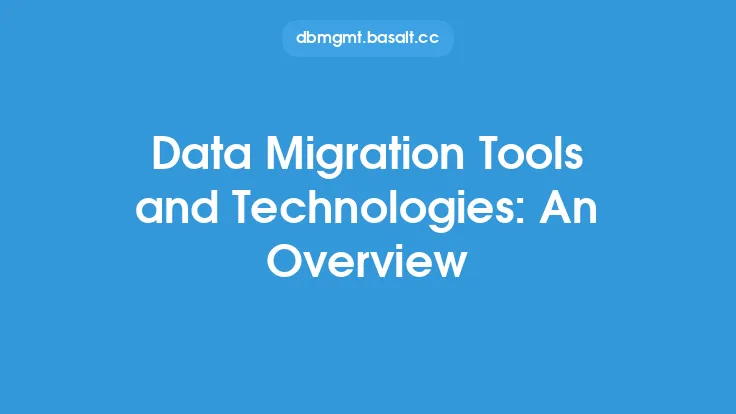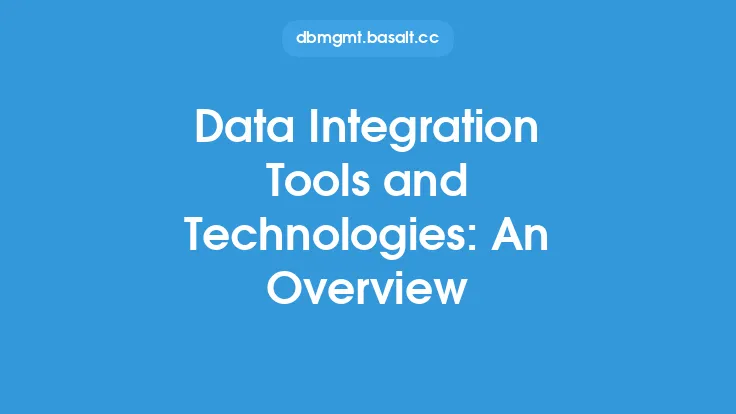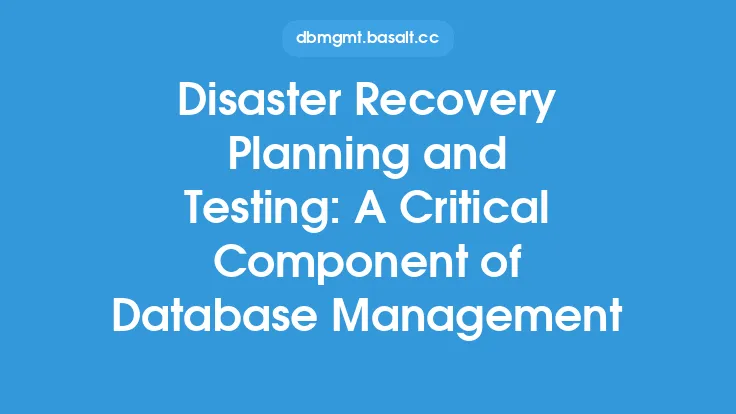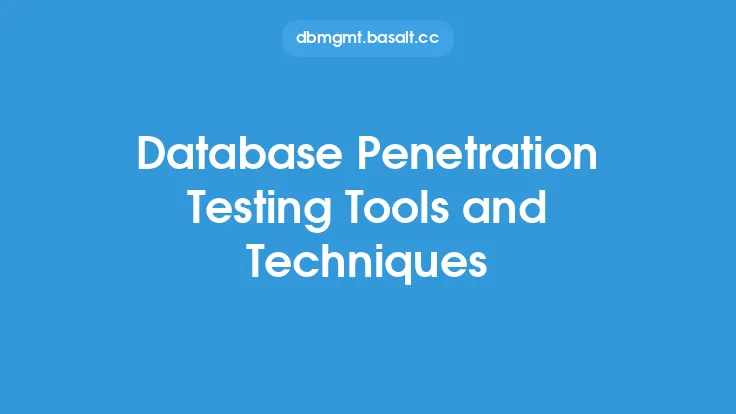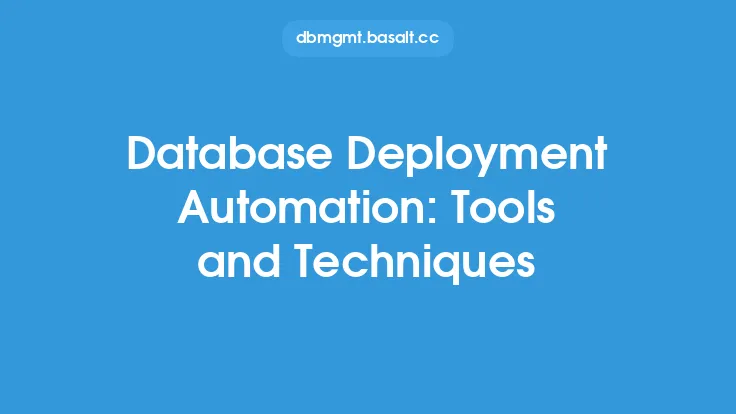Database testing is a crucial aspect of ensuring the reliability, performance, and security of databases. To achieve this, various tools and technologies are employed to simulate real-world scenarios, identify errors, and optimize database performance. In this article, we will delve into the world of database testing tools and technologies, exploring their features, benefits, and applications.
Introduction to Database Testing Tools
Database testing tools are software applications designed to test, validate, and verify the functionality of databases. These tools can be categorized into several types, including functional testing tools, performance testing tools, security testing tools, and data quality testing tools. Each type of tool serves a specific purpose, such as testing database queries, evaluating database performance under load, identifying security vulnerabilities, or verifying data integrity.
Types of Database Testing Tools
There are several types of database testing tools available, each with its own strengths and weaknesses. Some of the most common types of database testing tools include:
- Functional testing tools: These tools test the functionality of databases, including database queries, stored procedures, and triggers. Examples of functional testing tools include DBUnit, TestNG, and JUnit.
- Performance testing tools: These tools evaluate the performance of databases under various loads, including stress testing, load testing, and endurance testing. Examples of performance testing tools include Apache JMeter, NeoLoad, and LoadRunner.
- Security testing tools: These tools identify security vulnerabilities in databases, including SQL injection attacks, cross-site scripting (XSS) attacks, and privilege escalation attacks. Examples of security testing tools include OWASP ZAP, Burp Suite, and SQLMap.
- Data quality testing tools: These tools verify the integrity and accuracy of data in databases, including data validation, data cleansing, and data transformation. Examples of data quality testing tools include Talend, Informatica, and Trifacta.
Database Testing Technologies
In addition to database testing tools, various technologies are employed to support database testing. Some of the most common database testing technologies include:
- Virtualization: Virtualization technology allows testers to create virtual databases, which can be used to test database functionality, performance, and security without affecting production databases.
- Containerization: Containerization technology, such as Docker, allows testers to create containerized databases, which can be used to test database functionality, performance, and security in isolation.
- Cloud computing: Cloud computing technology, such as Amazon Web Services (AWS), Microsoft Azure, and Google Cloud Platform (GCP), provides a scalable and on-demand infrastructure for database testing.
- Automation frameworks: Automation frameworks, such as Selenium, Appium, and TestComplete, provide a structured approach to automating database testing, including test script development, test data management, and test execution.
Benefits of Database Testing Tools and Technologies
The use of database testing tools and technologies offers several benefits, including:
- Improved database reliability: Database testing tools and technologies help identify and fix errors, improving the overall reliability of databases.
- Enhanced database performance: Database testing tools and technologies help optimize database performance, reducing latency and improving throughput.
- Increased database security: Database testing tools and technologies help identify and fix security vulnerabilities, reducing the risk of data breaches and cyber attacks.
- Reduced testing time and cost: Database testing tools and technologies automate testing, reducing the time and cost associated with manual testing.
Challenges and Limitations of Database Testing Tools and Technologies
Despite the benefits of database testing tools and technologies, there are several challenges and limitations to consider, including:
- Complexity: Database testing tools and technologies can be complex to use, requiring specialized skills and knowledge.
- Cost: Database testing tools and technologies can be expensive to purchase and maintain, especially for large-scale databases.
- Limited coverage: Database testing tools and technologies may not cover all aspects of database testing, requiring additional testing methods and techniques.
- Integration: Database testing tools and technologies may require integration with other tools and technologies, which can be time-consuming and challenging.
Future of Database Testing Tools and Technologies
The future of database testing tools and technologies is promising, with several trends and innovations on the horizon, including:
- Artificial intelligence (AI) and machine learning (ML): AI and ML technologies will be used to improve database testing, including predictive analytics, automated test script generation, and intelligent test data management.
- DevOps and continuous testing: DevOps and continuous testing will become more prevalent, with database testing tools and technologies integrated into continuous integration and continuous delivery (CI/CD) pipelines.
- Cloud-native databases: Cloud-native databases will become more popular, with database testing tools and technologies designed to support cloud-native databases and cloud-based testing.
- Open-source database testing tools: Open-source database testing tools will become more widely adopted, offering a cost-effective and community-driven alternative to commercial database testing tools.
Conclusion
In conclusion, database testing tools and technologies play a critical role in ensuring the reliability, performance, and security of databases. With various types of database testing tools and technologies available, testers can choose the best tools and technologies to meet their specific testing needs. While there are challenges and limitations to consider, the benefits of database testing tools and technologies far outweigh the costs. As database testing continues to evolve, we can expect to see new trends and innovations emerge, including the use of AI and ML, DevOps and continuous testing, cloud-native databases, and open-source database testing tools.
